The aim of this workshop was to propose an interview in one of the many farms in Parc Agrari complex. It is understood by local municipality and consortium of the park that the whole Parc Agrari has been suffering pressure from the real state market, in order to give the land up for the construction of buildings or the construction of solar panels area. On this one week workshop, interviews were conducted between farmers and students to understand the main issues within the crop, possible waste in the area, impacts of climate change and how to enhance local economy.
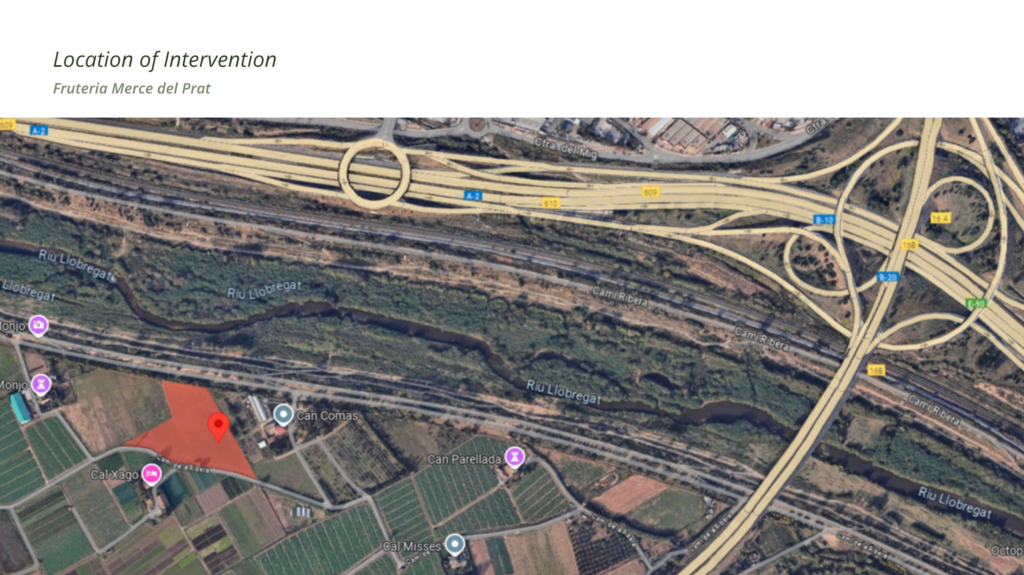
We understood that the land has an issue with attraction of pollinators agents due to the worldwide decrease of bees. Therefore, research was conducted to map the species that attract pollinator agents and understand the climate conditions that it needs to be in order to thrive. Students and faculty worked in order to plant these species in the rested soil and follow the growing of the plants until the next year. Following discussions and interviews with the farmers it was noticed that bark chips were considered as a large waste in the land, its capabilty of being absorbed as natural fertilizer could only come as some percentage of absortion, making this as a possible waste to add value.

Another waste that was not that evident was the waste being generated by the agricultural/supermarket supply chain. From 100% of all the vegetables and fruits being harvest in an specific period, a range from 10-30% of then are not fitted to supermakert standards, these vegetables are considered imperfect due to their sizes, colours and husk status. In order to solve this situation the farmers work with local families to supply them with food with these imperfect vegetables and fruits. However, eventhough these imperfect fruits are given a second life or a proper usage, the husks are not used or eaten such as pumpkins, melons and watermelons. On this proposal we focused on the usage of pumpkins husks as way to given the husks a third life and address the pollinators issue and the accumulation of bark chips. Pumpkins in Barcelona are produced and harvest all over the year, so the pumpkin husks can we utilized as potential for a pollinator system.
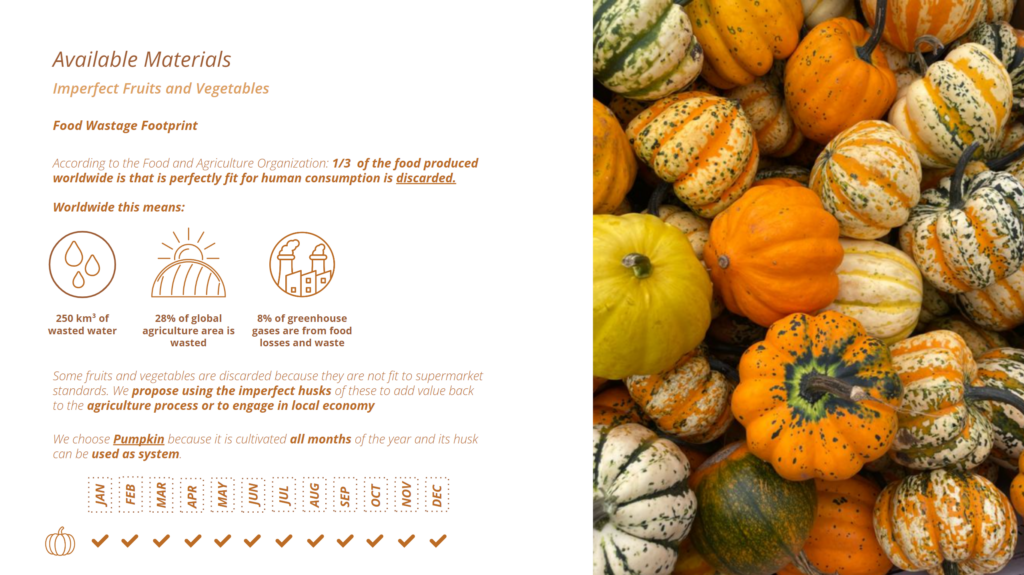
Extremes conditions such as heat, windy exposure and rain are also conditions that the farmers face each day on cultivating the soil and also the harvesting process, and this conditions are going to keep increasing due to climate changes. Due to that, we are proposing a Climate Shelter next to crop, that not only functions as a shelter for the existing conditions and a resisting area but to be an space that can teach the community about the importance of Parc Agrari, teach how the food is being planted and the process it takes to go to supermarket and families plates, or even an income generator on teaching how to harvest and plant or how to generate your own pot with a pollinator agent.
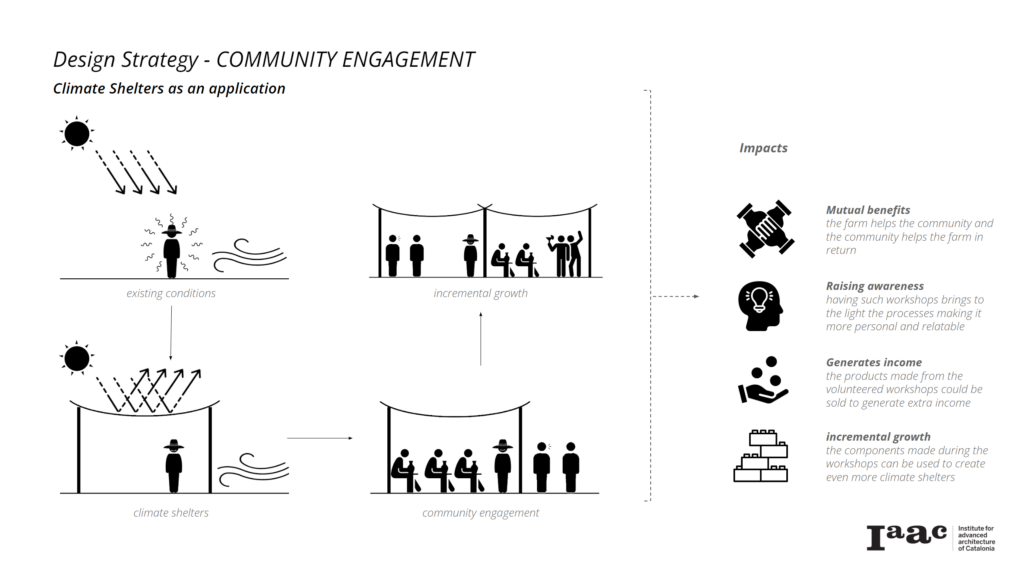
Based on the area of intervention we are aiming to extract locally sourced material or waste in order to add value to it and produce a component system that are going to be used as structure or design elements inside the proposed climate shelter. Pumpkin Husks of imperfect Pumpkins, local clay and bark chips are utilized to use the component system pot (aimed to attract pollinator agents). Moreover, local woodstick and hay are utilized to produce partition screens and shading systems. These products are them used to serve for the climate shelter but to also enhance the local economy and nitrogen cycles.
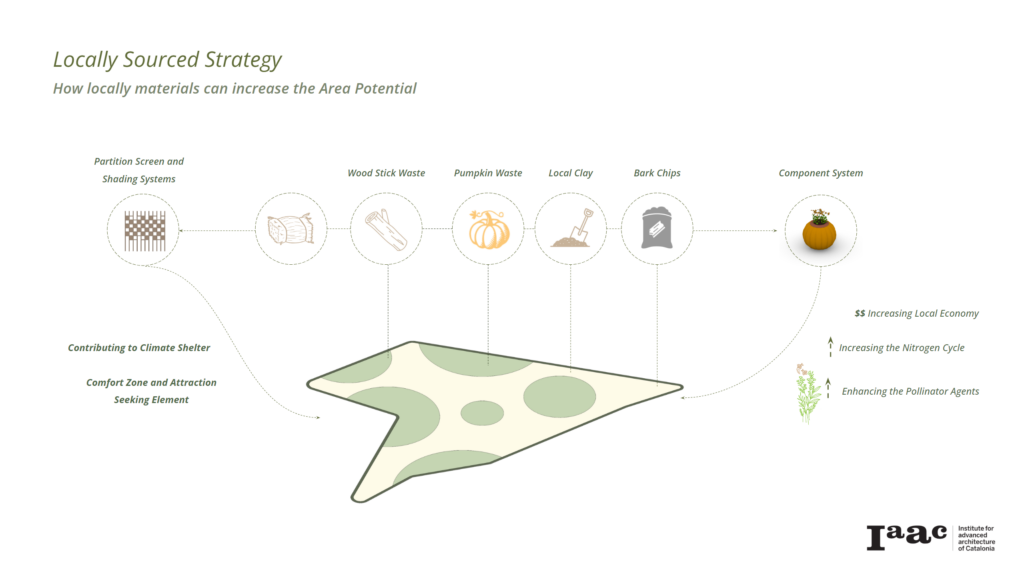
In order to construct the climate shelter, it was selected the negative spaces that are not used for currently crop spaces (crops that students and faculty planted from pollinator agents). Secondly it is selected the amount of area of the shelter based on sun orientation, areas that needs more protection during the year has smaller columns and areas that has less amount of sun has higher columns (to allow sunlight to pass). Therefone generating a curved roof informed by the position of the sun. We also have deliminated areas with two partition screen systems that are destined to local market and teaching areas.
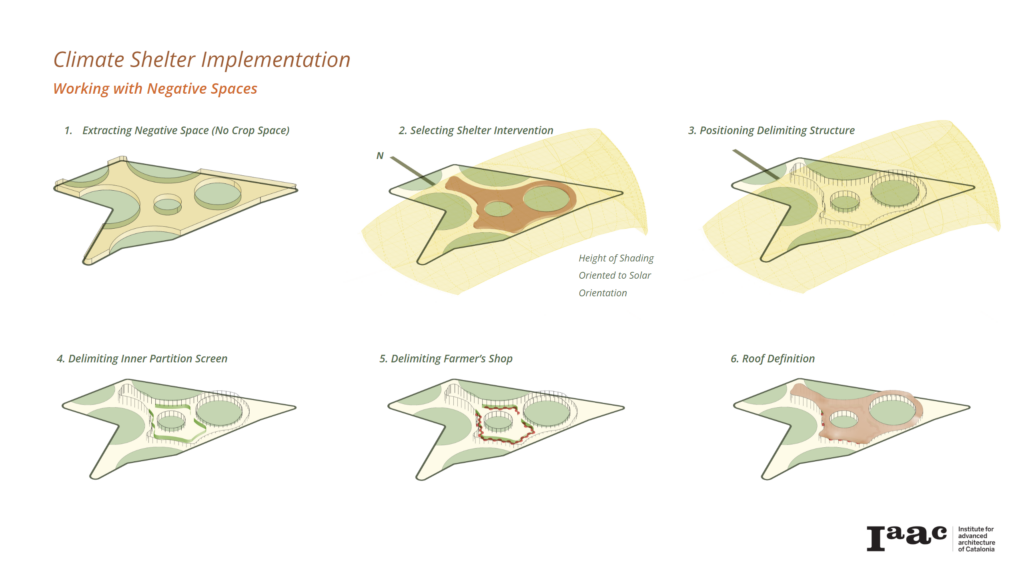
On this section it is represented the system for the roof, which is inspired from the african balafon instrument, used with local wood sticks of hay mesh. Pollinators Mesh a mesh that allows the pollinators to access the place but keep bigger predators away and also allowing for passive cooling. Moreover it can be seen both of the partition screen proposed for the local market and teaching areas (pumpkin system and bioplastic and recycled plastic screen).
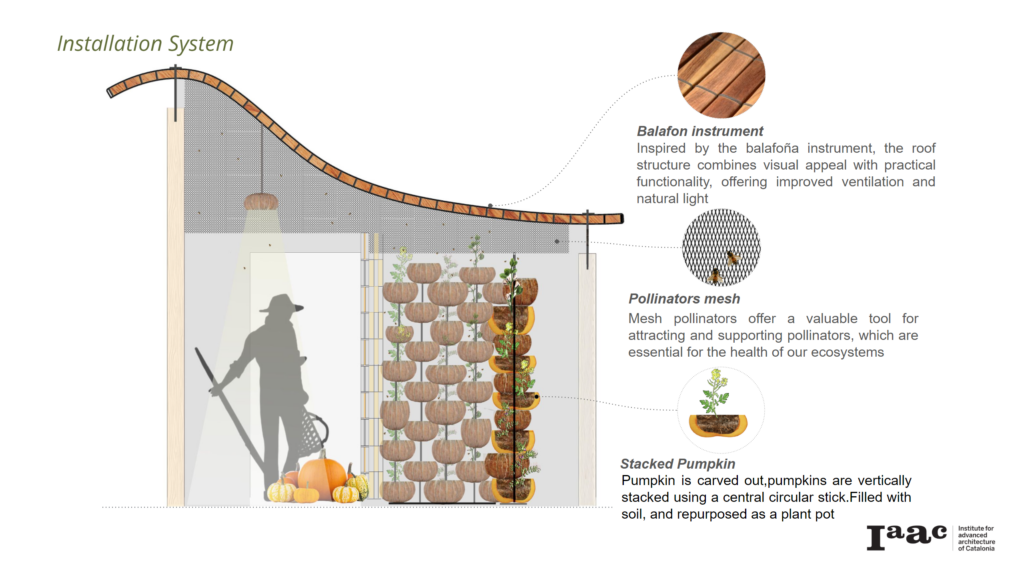
In order to produce the pumpkin component pot that can be utilized to teach the local community on how to produce your own pollinator agent pot, sell it to enhance local economy or to produce smaller plants and then plant it on the crop. This system utilizes husks from vegetables, mainly pumpkin, the pulp is carved or eaten by human and left to dry from 1-2 weeks outside. Once you have the dried mold a composite made from locally sourced clay and grinded bark chips is mixed and pour it into the pumpkin husk mold. Two hypothesis were raised and tested:
First one being the pumpkin mold stay in the pot system as a part of the nitrogen cycle for the pollinator species to dry, and the other hypothesis putting olive oil as a releaser from the clay mold and the pumpkin husk. From both of the tests the releasing substance worked but we found out that the pumpkin mold function as thermal protector and it enhances the growing conditions of the plants.
What is noticed also it that on both tests mold were growing inside the clay composite enhancing the structural capabilities of the clay composite (less brittle).
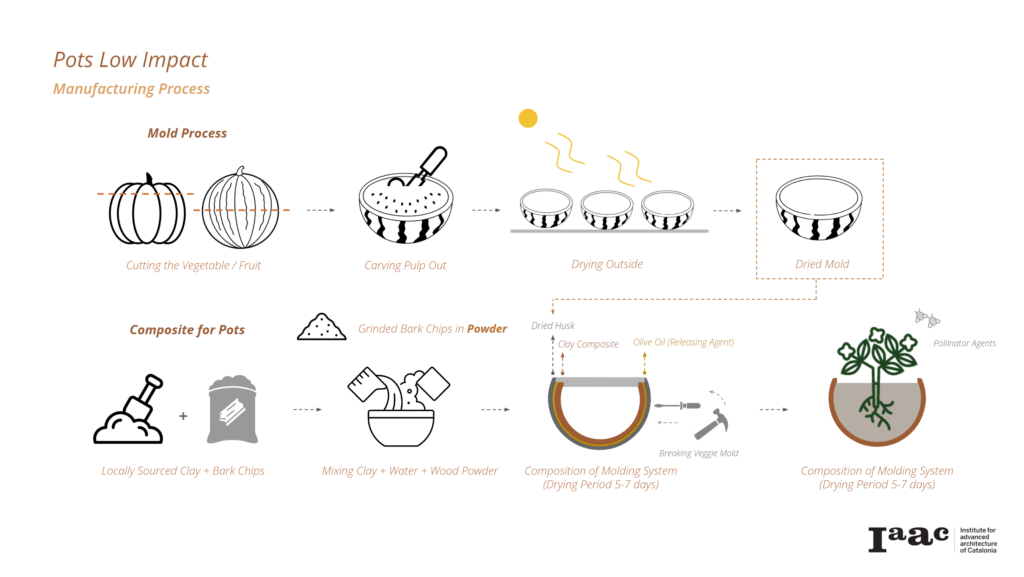
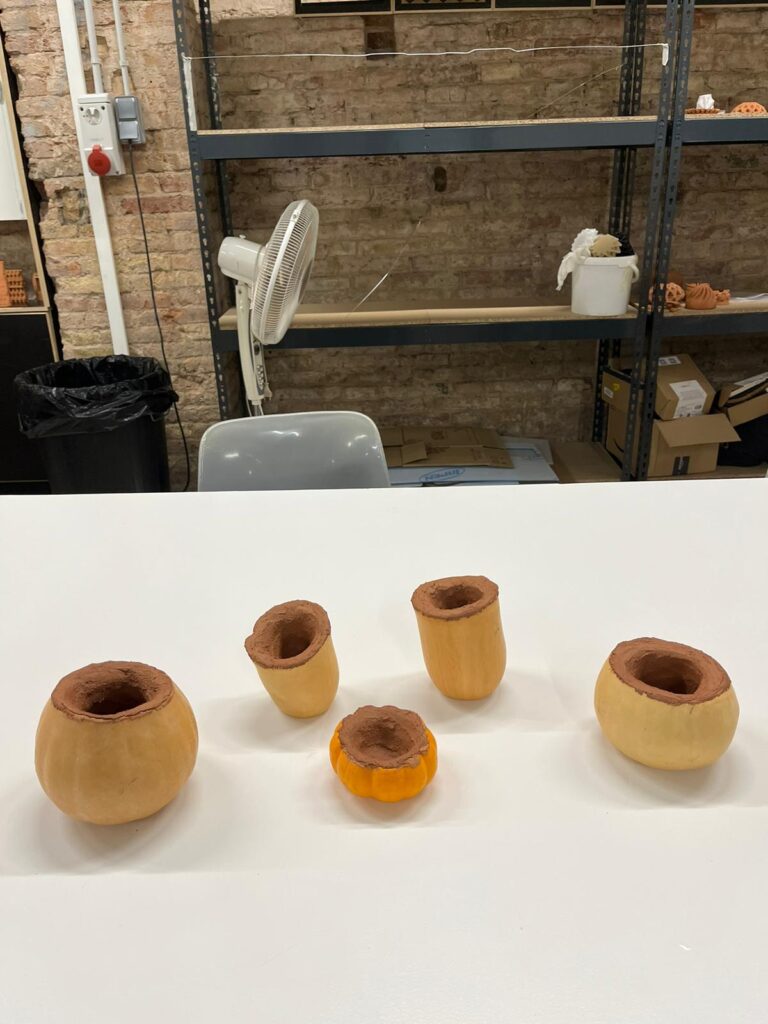
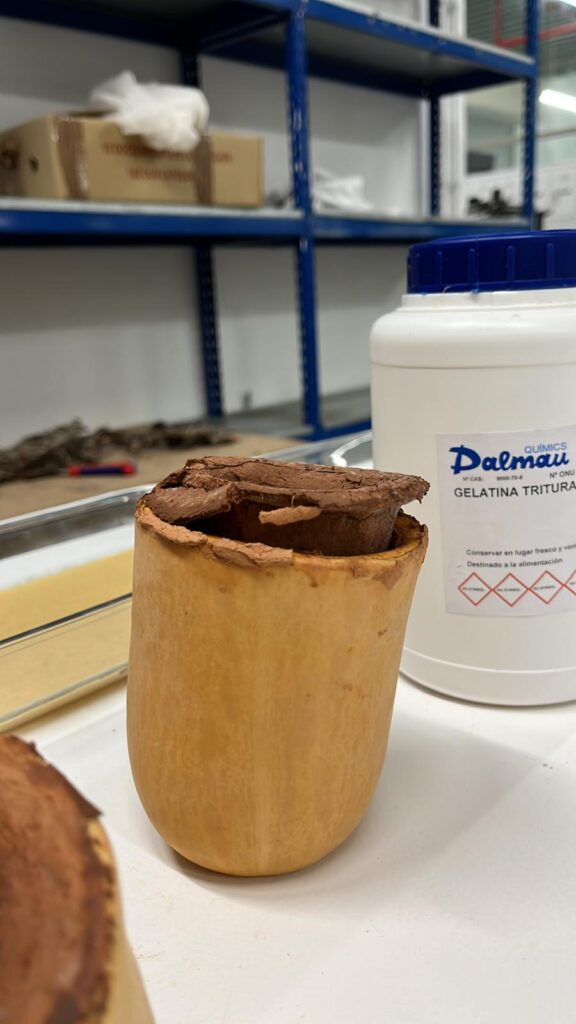
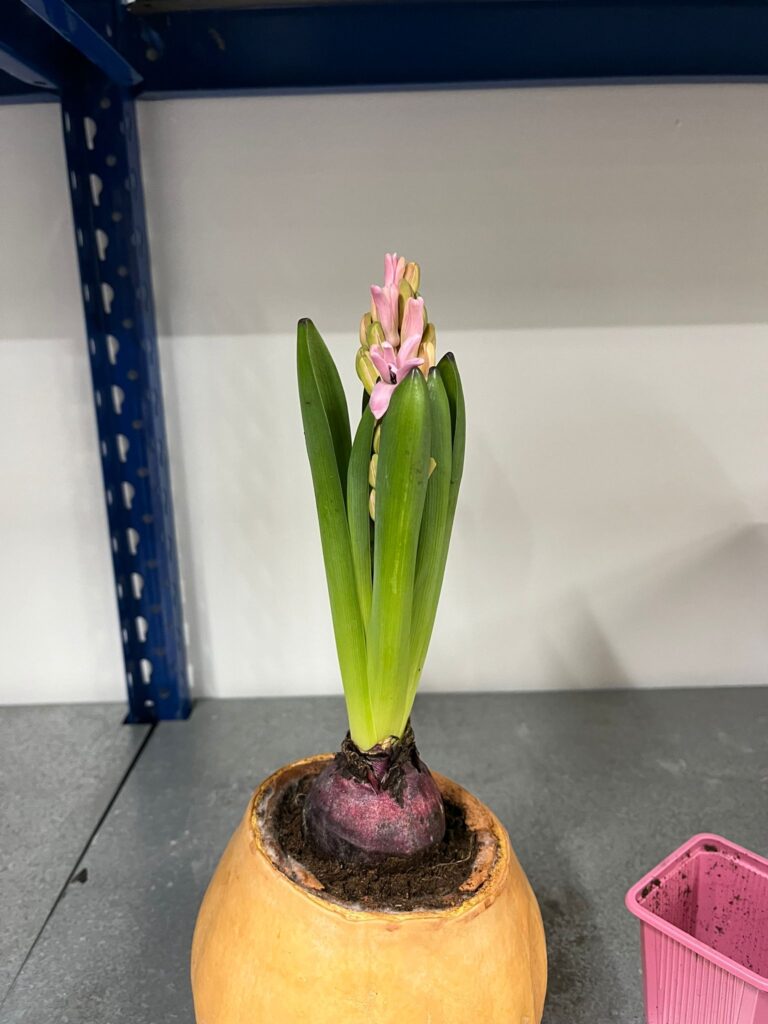
We have imagined a scalable system for the pumpkin screen. First we have the component scale of the pumpkin pot as a sellable product to attract pollinator agents. Second we have the regional scale of how to cross many pots with locally sorced wood sticks and develop the interlocking system. Further we have the partition wall as a design element and also a living wall to attract pollinators.
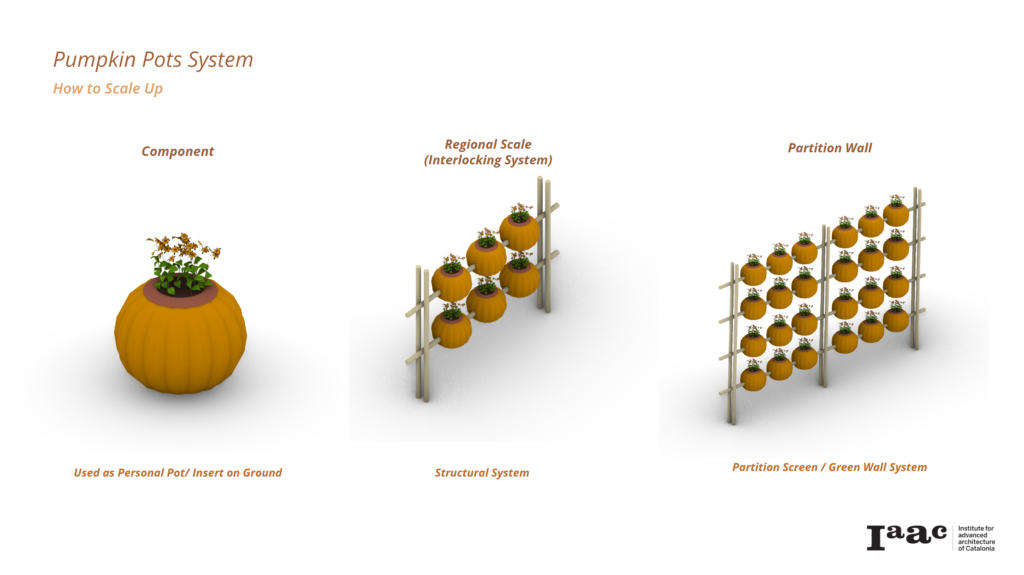
Further on we also imagine a partition screen where we can test bioplastic made out of imperfect fruits to have a natural shading and lighting, as well as recycling the plastic used for seeds bulks to used it where it is required full coverage. The bioplastic was tested at home with locally sourced caqui and gelatin based with different proportion of the waste.

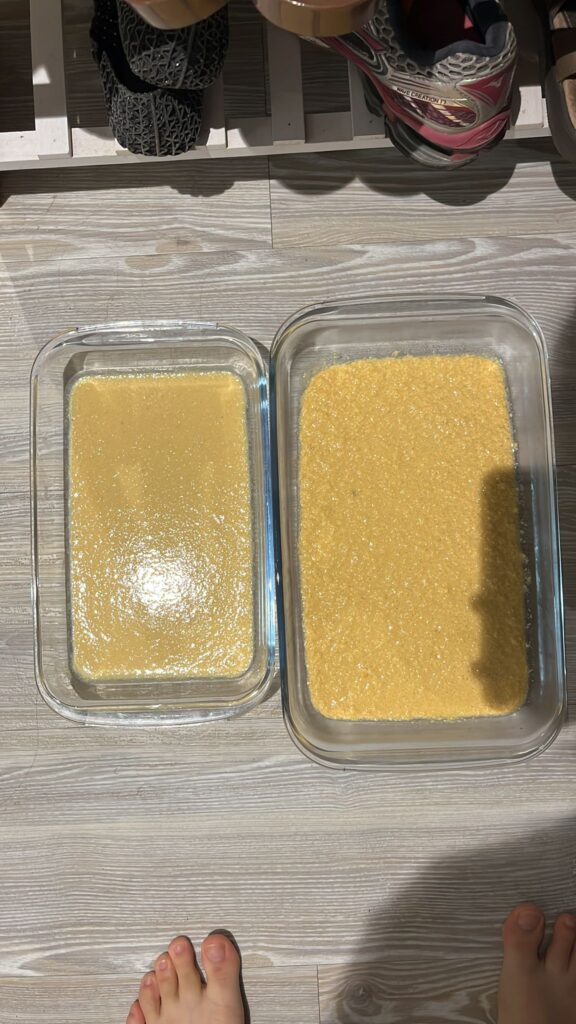
A second solution we tested was a basket or a mesh system made out of bark chips and creating a mesh out of nodding system. But due to irregular shapes of the bark chips and timeframe this experiments failed and it was decided to not go further on.
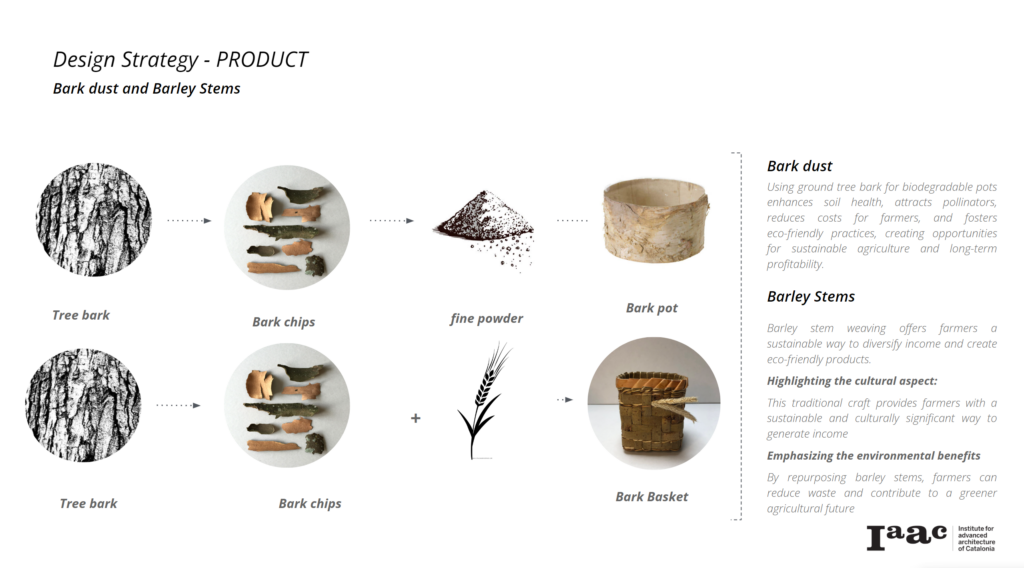
Here are some images and videos of the fabrication process of the pumpkin pots.
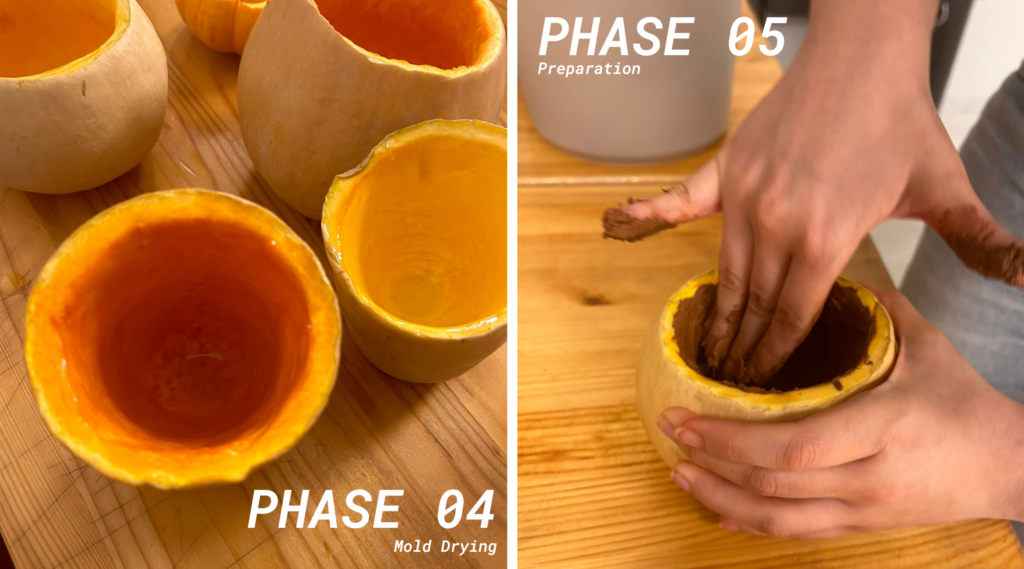
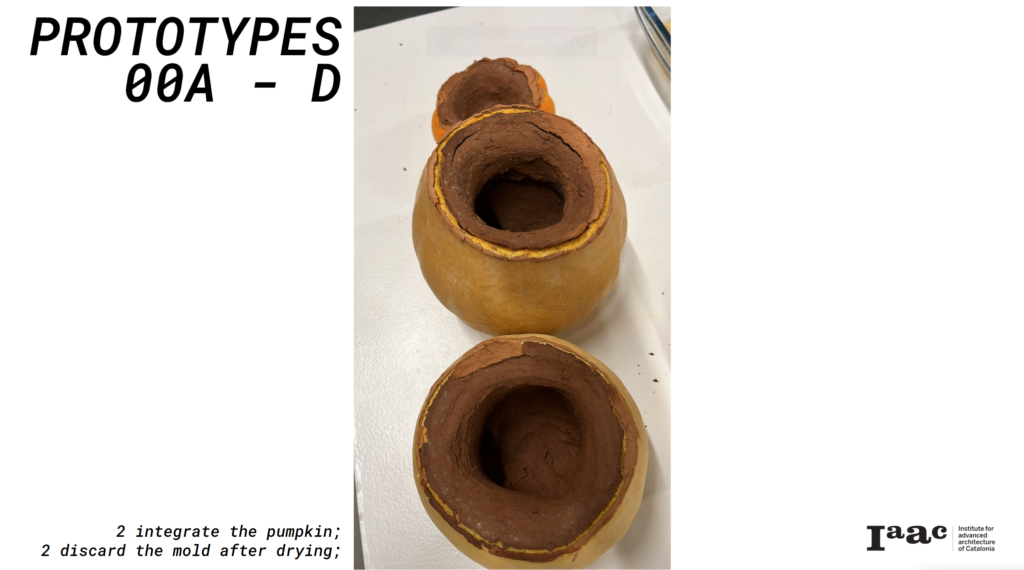
Further steps:
- Testing Interlocking System and Durability of Pumpkin Molds
- Testing the translucent aspect of the Bioplastic made from Gelatin (Recipe and Grid System)
- Explore Architecture Scale and Quantify the amount of Material to be Extracted
- Understand how to build both systems in order to teach community for collective construction

